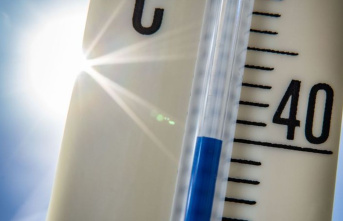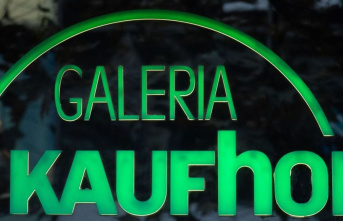Last year, people in Germany experienced the strongest price shock since the founding of the Federal Republic. Consumer prices rose by 7.9 percent on average over the year. "The historically high annual inflation rate was mainly driven by the extreme price increases for energy products and food since the beginning of the war in Ukraine," explained Ruth Brand, President of the Federal Statistical Office on Tuesday. Inflation weakened towards the end of the year. However, economists expect the pace to pick up again in January and February. A thorough easing in the whole of 2023 is not expected.
Federal Minister of Economics Robert Habeck is hoping for an inflation rate of less than five percent by the end of this year. Calculated over the whole year, the inflation rate will be "rather higher", said the Green politician to the TV station Welt on the sidelines of the World Economic Forum in Davos.
Highest level since the founding of the Federal Republic
Last year, inflation reached its highest level since the founding of the Federal Republic. However, the calculation method has changed over time. In 2021, consumer prices had increased by 3.1 percent compared to the previous year. The statisticians confirmed an initial estimate for both the full year and December 2022.
In addition to the sharp rise in energy prices as a result of Russia's war of aggression in Ukraine, delivery bottlenecks also drove up inflation. Even if price increases "were not fully passed on to consumers, energy and food in particular became noticeably more expensive for them," explained Brandt.
Consumers had to pay 39.1 percent more for household energy last year than a year earlier. Light heating oil (plus 87 percent) and natural gas (plus 64.8 percent) rose in price particularly significantly. Electricity prices rose by 20.1 percent. A visit to the gas station cost an annual average of 26.8 percent more than in 2021.
Food prices rose 13.4 percent year-on-year. Edible fats and oils (plus 36.2 percent) as well as dairy products and eggs (plus 19.7 percent) rose at an above-average rate.
Higher inflation rates reduce the purchasing power of consumers, who can afford less for one euro. People's financial leeway is shrinking, and increases in income are being eaten up by inflation. According to studies, people with low incomes are particularly hard hit. The biggest price drivers - household energy and groceries - account for a significantly larger share of their total shopping basket than for the wealthy.
Inflation rate of more than 6 percent expected
Government measures such as the 9-euro ticket limited to three months in the summer and the one-off assumption of the down payment for gas and district heating customers in December by the state provided some relief over the course of the year. As a result, inflation weakened at the end of the year from a high level. Consumer prices rose by 8.6 percent compared to the same month last year. In November, the inflation rate was still 10 percent. The record level of 10.4 percent was reached in October. Compared to November, the consumer price index fell by 0.8 percent in December.
Economists give people in Germany little hope of a significant drop in inflation in the current year. Sebastian Dullien, scientific director of the Institute for Macroeconomics and Business Cycle Research (IMK) of the Hans Böckler Foundation, believes that inflation has peaked. However, many economists expect an average inflation rate of more than 6 percent in 2023. Initially, inflation should pick up speed again after the one-off relief in December ended. From March onwards, the gas and electricity price brake could dampen inflation again.
The European Central Bank (ECB) is fighting the record inflation in the euro area by raising interest rates and is not yet at the end of its mission, as ECB President Christine Lagarde made clear in mid-December: "We have to go a long way."
The currency watchdogs are aiming for medium-term price stability with an inflation rate of two percent for the common currency area. In Germany, the HICP index, which is decisive for the monetary policy of the central bank, was on average 8.7 percent above the level of the previous year.






